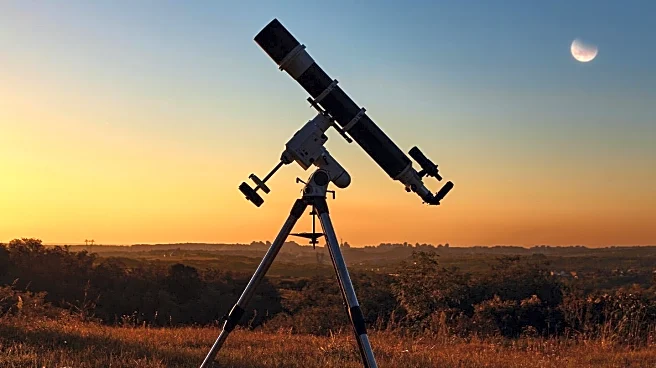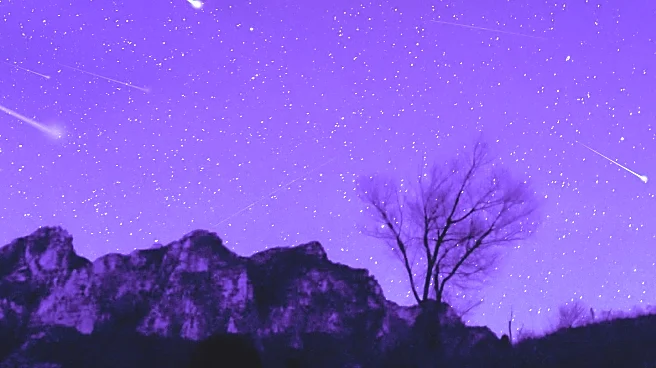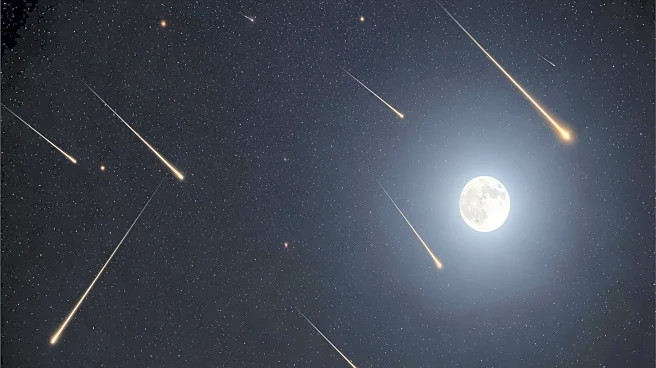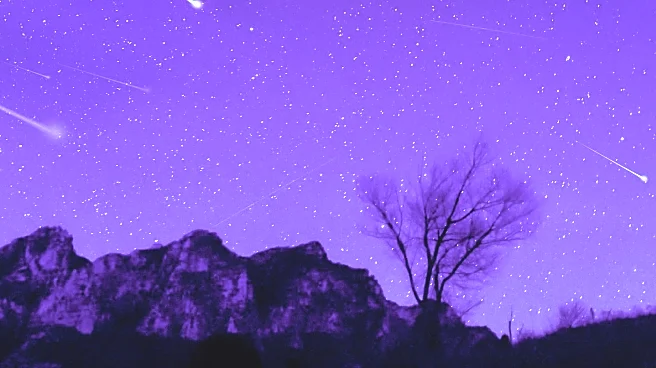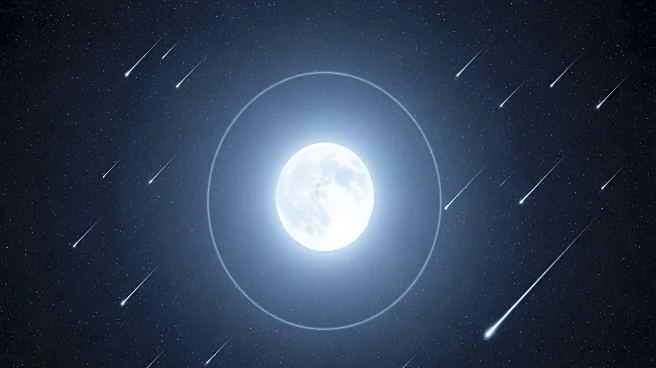What's Happening?
Sky & Telescope has released its weekly guide for stargazers, detailing celestial events visible from mid-northern latitudes between November 7 and 16. The guide includes information on the interstellar Comet 3I/ATLAS, which will be visible with amateur
telescopes as it emerges from behind the Sun. Observers at 40° north latitude can expect the comet to reach an altitude of 10° on November 9, increasing to 20° by November 16. The guide also highlights the visibility of Orion, the waning gibbous Moon, and other celestial bodies such as Jupiter, Venus, and Saturn. The Leonid meteor shower is expected to peak in the early hours of November 17, offering a potential view of a dozen meteors per hour under optimal conditions.
Why It's Important?
This guide is significant for amateur astronomers and stargazers, providing them with detailed information on upcoming celestial events. The visibility of Comet 3I/ATLAS offers a rare opportunity for observation, especially for those equipped with larger telescopes. The Leonid meteor shower, known for its bright fireballs, presents a chance for enthusiasts to witness a spectacular natural phenomenon. These events can enhance public interest in astronomy and encourage educational activities related to space and science. Additionally, the guide helps observers plan their viewing sessions, maximizing their chances of witnessing these celestial occurrences.
What's Next?
Stargazers are advised to prepare for the upcoming celestial events by ensuring their equipment is ready and planning their observation sessions according to the guide's recommendations. The visibility of Comet 3I/ATLAS will improve as it gains altitude, making it more accessible for observation. The peak of the Leonid meteor shower on November 17 will be a key event, with no moonlight interference expected, providing ideal conditions for viewing. Observers should also look forward to the ongoing visibility of planets like Jupiter and Saturn, which offer additional opportunities for observation and study.
Beyond the Headlines
The guide not only serves as a practical tool for stargazers but also highlights the cultural and educational importance of astronomy. By encouraging people to look up and explore the night sky, it fosters a sense of wonder and curiosity about the universe. The events described can inspire discussions about space exploration, scientific discovery, and the role of astronomy in understanding our place in the cosmos. Furthermore, the guide underscores the importance of preserving dark skies, free from light pollution, to ensure future generations can continue to enjoy and study the stars.
